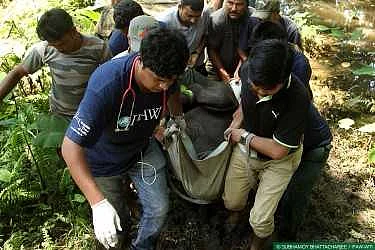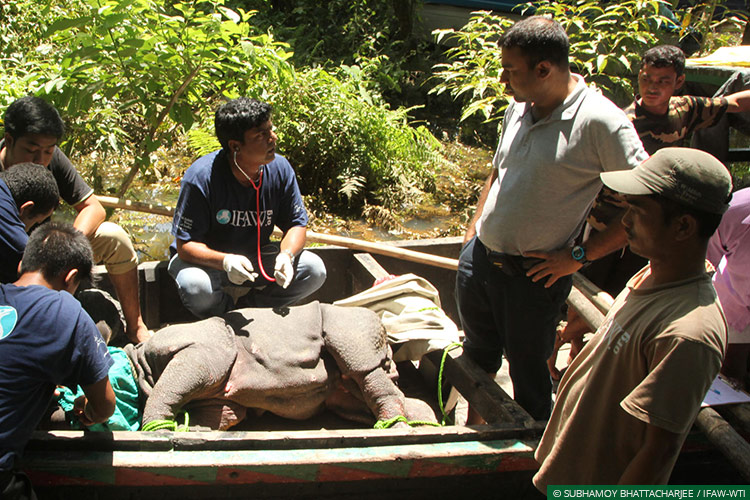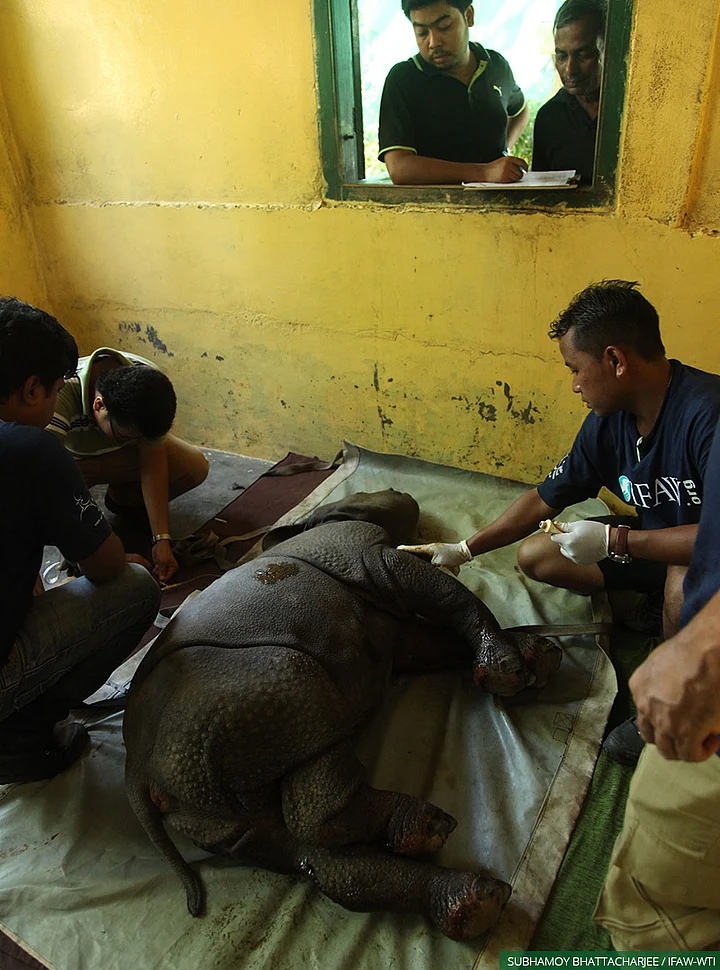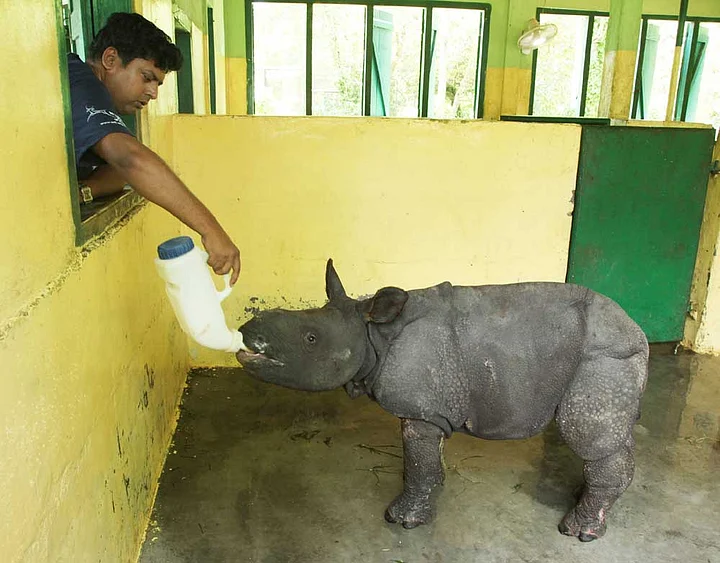Kaziranga National Park is inundated with flood waters. But what is strange about this distressing time for local communities and wildlife is that the grassland ecosystem depends on these very floods for its rejuvenation.
A classic example of nature’s power to decimate and revive.
It is the occurrence of floods that is the reason for the tremendous fertility of the park, resulting in rich alluvial grasslands and thus an incredible density of large animals like the rhinos, buffaloes, swamp and hog deer and the elephant. However, floods can be bad for individual wildlife if they get trapped by the fast rise of waters when they cannot make it quick enough to the highlands of Karbi Anglong.Vivek Menon, Founder, ED, Wildlife Trust of India
Along the Rescue Trail
Marooned and with a lung infection, a 3-4 month old male rhino calf was separated from his mother. He was rescued on 15 July by a mobile veterinary service, and was brought to the Centre for Wildlife Rehabilitation and Conservation (CWRC) – an Assam Forest Department and Wildlife Trust of India facility.
For wildlife veterinarian Panjit Basumatary, the biggest challenge of hand rearing this 3-4 month rhinoceros calf is the absence of the mother rhino to whom the baby would be deeply attached for the first four years of his life.
He is missing her acutely, is frightened and tries to attack his caretakers. Today for the first time he took some milk. Also a rhinoceros calf will not “go the bathroom’’ unless he can find his own mother’s toilet pit. This means more distress until he learns to make his own pit.Dr. Panjit Basumatary, Wildlife Veterenarian, WTI-IFAW
The calf can be ready to return to the wild only be after three or four years of long term care at CWRC. He will most likely never meet his mother again, because rhinos unlike elephants, don’t move in herds, individual females hard to identify.
Not just rhinos, but other animals in Kaziranga too find themselves stranded amid the natural calamity. At least six deer have been reported dead since the flooding began more than a week ago.
A Critical Danger
Rescuing wildlife that is displaced by flooding is critical, because with stranded animals comes the likelihood of human-animal conflict.
Kaziranga is fringed on the southern side by humanity. As rhinos and elephants in particular move through habitation they do come into conflict with people. Also when animals view the highlands from the park they can’t see the highway and human habitation. This leads to a lot of accidents and deaths.Vivek Menon: Founder, ED, CEO, Wildlife Trust of India
VIDEO CREDIT-WTI-IFAW /Videography Subhamoy Bhattacharjee/ Editing Anjali Pathak
With flooding an annual occurrence, 5000 wild animals including rhinos, elephants, swamp deer, hog deer, gibbons, jungle cats and reptiles have been returned to the wild since 2002.
While about 50 percent of those rescued survive, the very traumatised or injured are unlikely to make it.
(We all love to express ourselves, but how often do we do it in our mother tongue? Here's your chance! This Independence Day, khul ke bol with BOL – Love your Bhasha. Sing, write, perform, spew poetry – whatever you like – in your mother tongue. Send us your BOL at bol@thequint.com or WhatsApp it to 9910181818.)
(At The Quint, we question everything. Play an active role in shaping our journalism by becoming a member today.)



